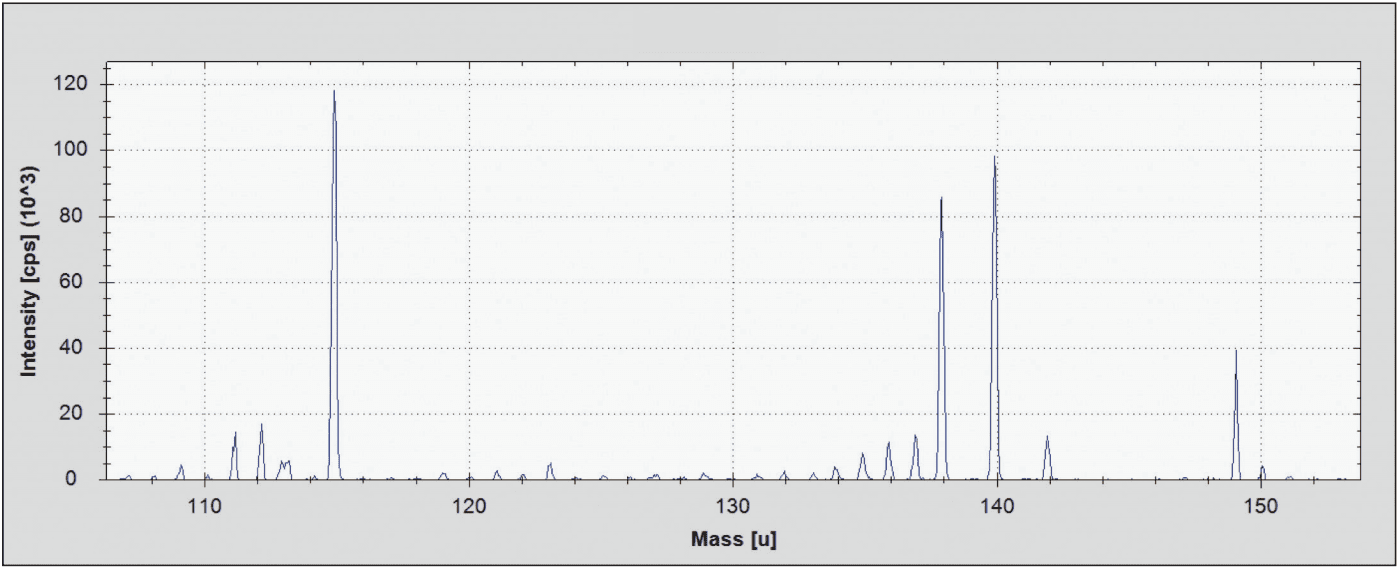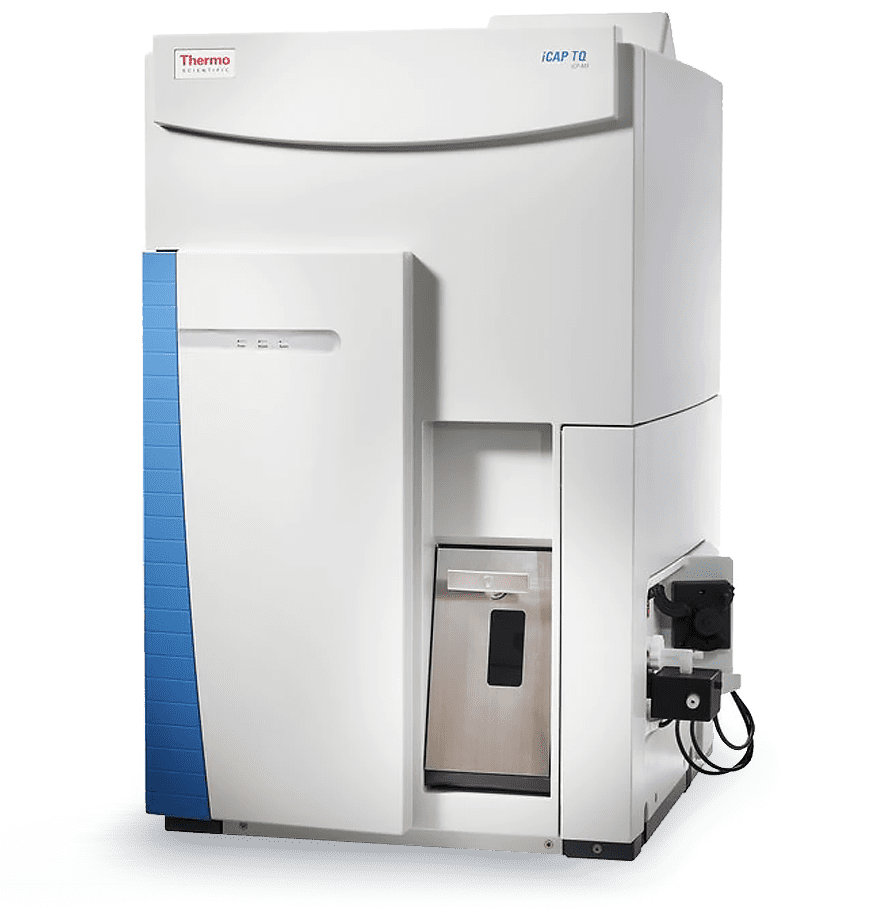Insights Through Inductively Coupled Plasma Mass Spectrometry (ICPMS)
Measure the elemental composition of your sample with one of the most sensitive multiple-element analysis methods available.Get Expert Analysis of Your Material
What is Inductively Coupled Plasma Mass Spectrometry (ICPMS)?
Inductively Coupled Plasma Mass Spectrometry (ICPMS) is a process by which an inert gas (argon) is inductively heated via current through a surrounding electromagnetic coil to form a plasma.
The sample (typically in liquid form) is inserted, aerosolized, and digested in the plasma into ion fragments, which are accelerated through a quadrupole mass analyzer to yield a mass spectrum.
Peaks in this spectrum correspond to the elemental ions present in the original sample, yielding quantitative and semi-quantitative elemental composition information.

Our Process
Plasma Formation
An inert gas (argon) is inductively heated via current to form a plasma.
Sample Introduction
The sample (typically in liquid form) is inserted, aerosolized and digested in the plasma into ion fragments.
Quadrupole Mass Analysis
Ion fragments are accelerated through a quadrupole mass analyzer to yield a mass spectrum.
Data Analysis
Peaks in the resulting mass spectrum correspond to the elemental ions present in the original sample, yielding elemental composition information.
ICPMS Instrument Used
ThermoFisher Scientific iCAP Triple-Quad (TQ) ICP-MS
- Detection Limits vary by atomic species: as low as < 0.5 (ng/L)b (for 9Be)
- Abundance Sensitivity: < 0.005 ppm
- Minimum Dwell Time: 100 μs in pulse and analog
- Dynamic Range: more than 10 orders of magnitude
- Stability: below 2.0 %RSD over 10 minutes
- Isotopic Ratio Precision: below 0.1 %RSD
- Nebulizer: Concentric glass
- Nebulizer Default Flow Rate: 400 uL/min (pumped)

Strengths
- Extremely high elemental sensitivity: limit on the order of parts-per-trillion
- Can detect most elements in the periodic table with a single experiment
- Accepts a wide array of sample types (solution or solid, inorganic or organic, simple composition to complex mixtures)
- Rapid analysis
- Isotope detection
Limitations
- Quantitative analysis requires parallel measurement on reference / control sample
- Does not easily capture molecular / compound information
- Destructive
- Sample preparation such as sample digestion via acid can be time-consuming
- Limited total dissolved solids (TDS) tolerance
